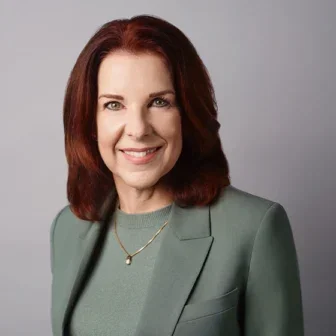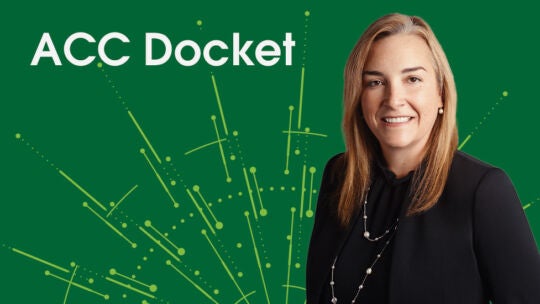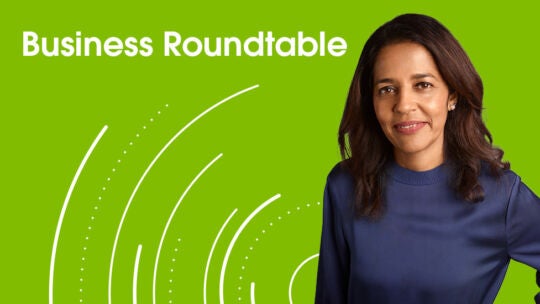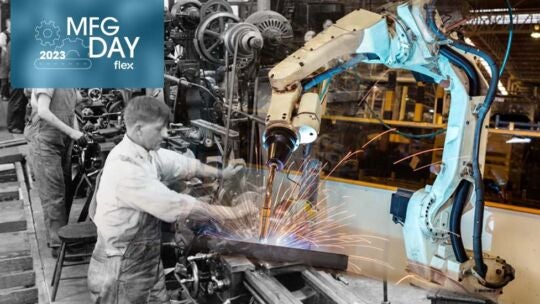
Goals and targets are the centerpiece of every corporate sustainability strategy as they guide priorities and progress.
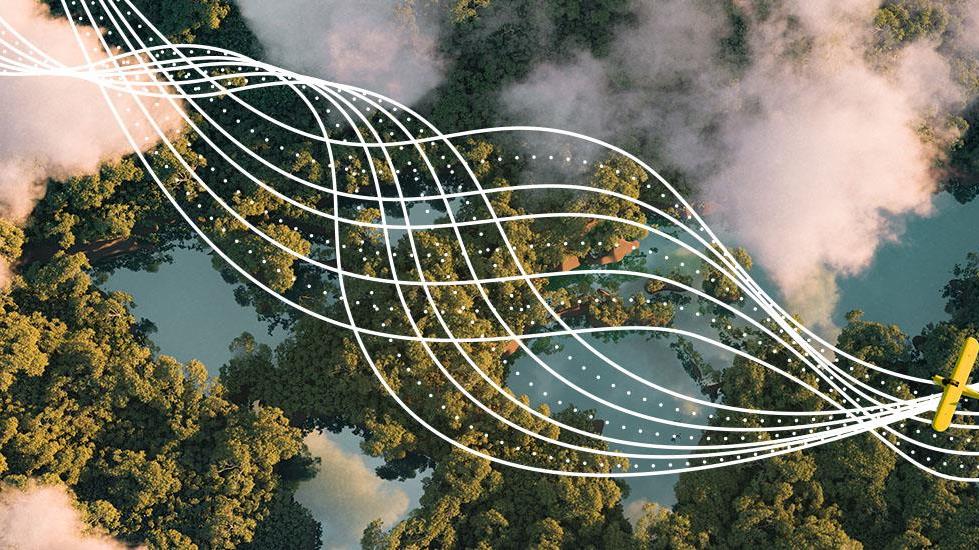
Since many of our customers and suppliers are in the early days of their sustainability journey, I would like to share some tips on how to approach goal setting.
One way to tackle this exercise is to deconstruct it into several milestones:
- Assess material sustainability issues
- Identify cross-functional collaborators
- Develop targets
- Measure progress
While there isn’t a cookie-cut formula for developing and achieving sustainability goals, two constants will permeate your efforts: collaboration and connecting the dots.
Assess material sustainability issues
The crux of your goals will rest on the materiality assessment that identifies and prioritizes your organization’s sustainability focus areas. This is a critical step to sustainability strategic planning as your commitments will drive important downstream activities and efforts, from meeting certain compliance requirements to investing in the right resources to collect, measure, and report on your organization’s progress. You will interview your company’s stakeholders to learn how they prioritize various issues. These insights will help guide not only strategy but also your company’s sustainability story. Keep in mind too that your sustainability goals will go far if they are clearly connected to the mission and purpose of your organization.
The first big tasks are to uncover, size up, and analyze the sustainability topics that could materially impact your business, or conversely, the issues that your operations could materially impact. Many of our customers, for instance, have expressed interest to find ways to reduce greenhouse gas emissions and ensure their supply chain partners have safe and ethical labor practices. Thus, both climate and labor issues are top of mind on our materiality assessment.
As you prioritize the issues list, the ones that will rise to the top will be those that are:
- Most material to your business
- Most important to your stakeholders
Identify and engage stakeholders both inside and outside of your organization who can constructively weigh the various issues and share insightful perspectives with you. Besides customers, investors, and community partners, we also engage suppliers, governments, regulatory agencies, and labor organizations.
We have also found experts in academia and nonprofits to be helpful; for instance, the World Wildlife Fund has been a great partner in guiding us on how to engage and support certain communities where we operate.
As for internal stakeholders, we consult a cross section of subject matter experts (SMEs) including HR specialists on diversity and equity to staff from our CFO’s office who advise on risks and budgets. Given our global operations, we ensure our stakeholders represent the interests of our key geographic markets.
As the pool of diverse stakeholders will have varying priorities, the sustainability team will aim to connect these dots and align them to Flex’s mission along with the key business drivers. After analyzing the findings from our research, surveys, and interviews, we validate our assessment with the executive team. You can see Flex’s materiality matrix on page 18 of our 2021 sustainability report. We update our list of material issues annually in response to the evolving needs of our most valued stakeholders, and this is reflected in our 10K and proxy reports.
While much of your research will be inward looking, there’s much to consider outside the walls of your organization to help shape your goals. You’ll want to get a handle on emerging trends and practices. As you pore through the sustainability reports of your peers, you’ll want to benchmark them against that of your company’s. In what areas are you lagging, exceeding, or at parity with your peers? This can inform your goals as you surface the areas that need to be improved, as well as those where you are ahead and can continue to build momentum.
Identify cross functional collaborators
On completing your materiality assessment, it’s time to identify internal and external collaborators who will come together as partners on your company’s sustainability journey, starting with the development of your goals.
Because corporate responsibility today has an extremely broad scope that ranges from fair labor practices to net zero emissions, sustainability aspirations are threads that today run through many facets of the business. As a result, sustainability teams rely on partners across the organization to help set, execute, and measure sustainability goals. At Flex, these teams include facilities, human resources, operations, legal, business units, and finance, and given our global presence, we also engage managers who lead our sites across the world.
Your sustainability partners are not limited to internal collaborators. If possible, include key customers and shareholders in your materiality exercise. It will ensure you are getting a balanced perspective and may help you uncover opportunities. Most notably, you’ll want to engage your suppliers to ensure the integrity of your supply network. At Flex, we set expectations with our vendors through a supplier code of conduct and regularly evaluate our suppliers and our labor agencies for potential risks as well as sustainability performance. We also offer educational resources such as webinars and share best practices with our suppliers to help them set environmental targets.
Regardless of whether your partners are internal or external, continuously engage and empower them. Check in with them at a regular cadence to offer support, ensure accountability, and proactively share research to help them think about their goals over the near, mid-, and long-term. Engaging the right partners who can drive progress and be accountable for their targets should lead to successful outcomes. Equally, fluency in integrating the efforts of collaborators and connecting the dots across different sustainability domains are also critical success factors. In short, program managers who empower their collaborators by positioning sustainability as a shared goal and facilitating progress rather than taking outright ownership of the goals will see productive returns on their efforts.
Develop and align
With your internal collaborators, develop targets that align with your organization’s mission and key business drivers. For a manufacturer like Flex, our goals will hew to sustainable manufacturing practices that, among others, minimize our environmental footprint, promote the well-being of our employees, and ensure that ethics and transparency remain a priority.
Here’s a checklist to help you connect the dots in the goal-setting exercise:
- Tie your sustainability agenda to your company’s purpose, mission, strategy, and day-to-day operations
- Align to frameworks that are significant to your business and stakeholders for measuring performance
- Think big, but also think incrementally about the progress that can be realistically achieved quarter-to-quarter and year-to-year
Sustainability is a journey, not a sprint. Take bold but purposeful steps that put your organization on the road to responsible growth. Go for aspirational goals that can inspire your organization to join the journey and make meaningful progress that can beget greater progress. While net-zero or zero-waste can sound daunting, laying the bricks to get there and achieving incremental results should embolden your organization to fully embrace ambitious targets.
Here at Flex, we launched Flex 20 by 2020 in 2015, committing to 20 sustainability targets in alignment with the UN Sustainable Development Goals. Every year since then, we have shared our progress on each of these goals. At launch, this was a big step for our sustainability team, but the decision was to go big in order to challenge ourselves and learn from the experience. Out of our 20 goals, we met 16 and are proud of our efforts. We have since taken our learnings and investments to launch our 2030 strategy and commitments, reflecting our most ambitious goals yet. Among our targets, we commit to reducing absolute scope 1 and 2 GHG emissions 50 percent by 20301 and achieving zero waste in at least half of our manufacturing sites by 2025.
Track and measure
Measuring and reporting your progress will help you evolve your sustainability journey. Moreover, sharing progress and milestones with your collaborators and stakeholders can yield constructive feedback for continuous improvement.
Now, what if you miss a target? While it is not uncommon for companies to miss their big goals, be sure to analyze where your organization’s efforts fell short and apply these learnings to continuously improve. Be as transparent as possible in communicating why you did not meet your goal. One key is to operationalize your sustainability strategy and create annual or multi-year plans with key performance indicators (KPIs), milestones, targets, and goals. Communicate your goals and progress to your employees and begin sharing this information publicly as the expectation is that sustainability reporting is becoming mandatory just like financial reporting.
I’ll share more about best practices for collecting data in my next post. Remember, sustainability is new to some businesses, and being that it is a never-ending journey to lay the foundations for responsible growth, let’s learn how to get better together.
1from a 2019 base year and target boundary includes biogenic emissions and removals from bioenergy feedstocks
